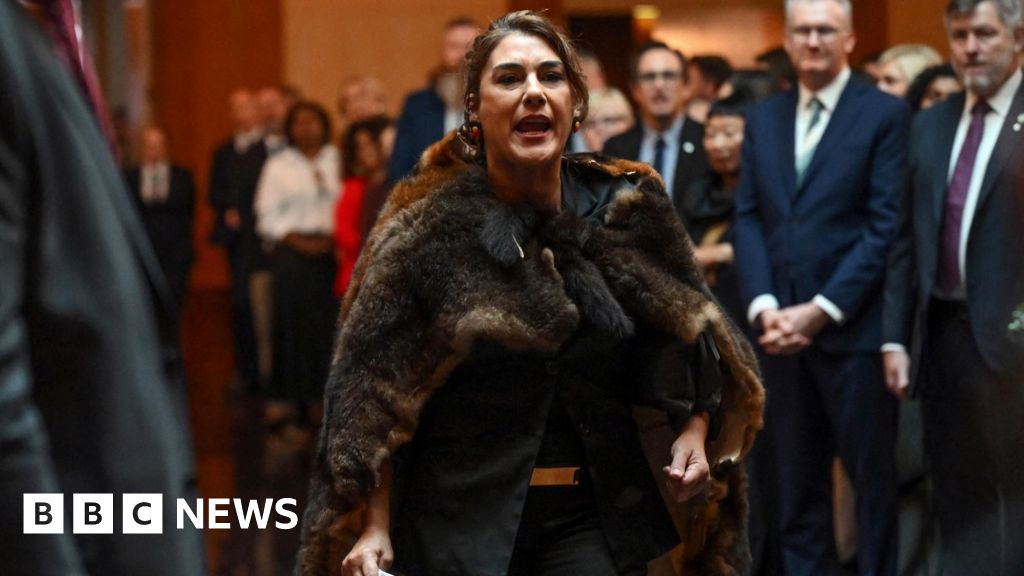ARTICLE AD BOX
Image source, Getty Images
Image caption,Chains like McDonald's stand out for how successfully they have adapted their products to India
For decades, global fast food giants have been catering to Indians used to eating from local eateries. In recent years, they have moved towards fusion of regional flavours. The BBC's Zoya Mateen and Meryl Sebastian report.
Western fast-food was a novelty when McDonald's opened its first outlet in an upscale Delhi neighbourhood in 1996.
But the chain persisted, reinventing itself by tailoring its menu to local tastes.
So, there was mayonnaise made without eggs, meat patties without pork and beef. There was a palette of bold Indian flavours which found expression in a unique vegetarian spread: McAloo Tikki (a tangy burger made out of potatoes and peas), Pizza McPuff (a calzone-like sandwich stuffed with pizza toppings and cheese), and spicy wraps made from cottage cheese.
In no time, the burger had gone national.
The company's trademark golden logo became a ubiquitous presence across cities and its catchy jingle - 'I'm lovin it' - a reminder of the good times for many.
McDonald's has become a template for American fast food chains that are constantly localising their menus in a bid to dominate the Indian market. The result: a range of offerings that are so liberally flavoured with Indian spices that they bear little resemblance to the original western counterpart.
"McDonald's, KFC and Domino's stand out for how successfully they have adapted their products to India, even at a regional level," says Arvind Singhal, chairman of Technopak, a consultancy firm.
Image source, Getty Images
Image caption,Family eating at India's first McDonald's, which opened in 1996
India is no stranger to a fusion of flavours in its food.
This ranges from crushing papadam (a thin, crisp flatbread) into a portion of payasam (a sweet rice pudding) in the southern state of Kerala to sprinkling chilli powder on guava ice cream from the famed Apsara Ice Creams in the city of Mumbai.
International brands tweak their products to reach a large audience in India, adding more spices in case of salted foods or making sweets sweeter than how they may be preferred in Europe, Mr Singhal says.
"In the 1980s, Nestle came out with a ketchup variant under their Maggi brand that was 'hot & spicy' and it became an instant hit," Mr Singhal says. "Likewise, with Maggi noodles came out with a wide range of flavouring sachets to appeal to a wider but highly heterogeneous group of Indian consumers."
But in recent years, brands have moved towards experimenting with more and more unusual combinations in their food.
Image source, Getty Images
Image caption,India is no stranger to a fusion of flavours in its food
Snickers has introduced a kesar pista - saffron and pistachio that is central to traditional Indian sweets - flavour of its iconic chocolate-nougat bar. Dunkin has launched its own thandai, a chilled sweetened milk drink garnished with dry fruits, rose petals and saffron. And McDonald's has incorporated butter chicken - a popular sweet and spicy roast chicken preparation - into its burgers.
Homegrown brands like Bira have also jumped on the fusion bandwagon, offering a mango flavoured lassi (a sweet-sour yogurt beverage) milkshake beer.
Some of the fusion food is also performative though, done to satisfy a market need.
"Unusual food combinations go viral when they are covered by food bloggers and it gives a brand visibility," says Karan Dua, who runs the popular YouTube channel Dil Se Foodie, or Foodie by Heart.
But new-fangled customisations can be tedious in a country where there's a local substitute for everything and cuisines are part of a larger culture.
Thinking burgers? There's vada, or greasy doughnuts, piping hot and so spicy that eating them can be an extraordinary feat of gastronomic endurance.
Fancy a popcorn? How about bhel poori instead, a crispy rice snack even that Bollywood celebrities swear by its health benefits.
Not to forget the iconic momo, or steamed dumpling, which has fast become the culinary lodestar of the local fast-food scene.
Image source, Getty Images
Image caption,Bollywood celebrities swear by the health benefits of bhel poori instead, a crispy rice snack
Mr Dua says that things get trickier at regional level, where tastes and food habits can change at every bend of the road.
Last year, in Surat city in western India, he tried a fruit tea - a combination of cut fruits and milky tea. In another part of the state, he recalls seeing a store whose popular item included an ice cream sandwich with slabs of cheese and butter.
"In Gujarat, people are used to mixing savoury with sweet in their food and so these combinations are quite common and popular there. But it'd be a hard sell in a city like Delhi," he says.
But fast-foods are only one end of the spectrum.
When Pooja Dhingra opened her iconic French patisserie, Le15, in south Mumbai, her plan was simple: she wanted to use French techniques and Indian flavours.
This led to many fun flavour combinations - paan (betel leaves) macarons, chai or tea cupcakes, and green chilli truffles to name a few. As her menu received glowing reviews, she began experimenting further, often using her parents as guinea pigs for trials of new flavours.
"I've always found it useful to look at my culture and life experiences to create menus. Some of it can be disastrous - like a kala khatta macaron that never worked! - but it can also be wonderful."
Image source, Getty Images
Image caption,Pooja Dhingra opened the Le15 patisserie with a plan to use French techniques and Indian flavours
Once food has the personality and experiences of the chef, Ms Dhingra adds, marketing it is a lot easier too.
"My favourite thing to do is to plan our Diwali menu which is always the best of the French and Indian world," she says. "Our kaju katli macaron is a huge hit and this year I'm excited to incorporate the besan laddu on my menu - with a French twist of course!"

 2 years ago
53
2 years ago
53








 English (US)
English (US)